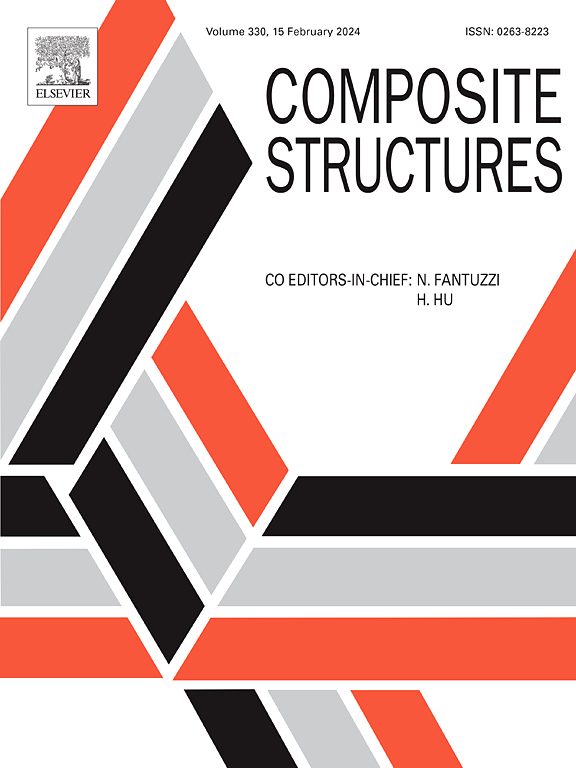Modelling of dynamic flexural response of composite eco-structure beams using a 3D elastic–plastic damage model
IF 6.3
2区 材料科学
Q1 MATERIALS SCIENCE, COMPOSITES
引用次数: 0
Abstract
The dynamic flexural behaviour of sandwich beams made of a composite eco-structure (plywood and flax/epoxy composite skin) is studied using an explicit 3D numerical model. The model includes a constitutive elastic–plastic behaviour with a plastic potential and its consistency multiplier-based yield stress criteria, a modified 3D-Hashin damage initiation and a strain threshold-based exponential damage evolution model. Experimental tests at different impact energies were carried out to validate the proposed model. The variation of force with time and displacement as well as the velocity–time profile are accurately predicted. The model is able to capture the stiffness degradation, post-peak softening, de-kinking and unloading phase that appear in the force–displacement curve. The validated model is employed to investigate the evolution of inter- and intralaminar damage for different impact energies. The most relevant damage modes are delamination and compressive damage modes (transverse and normal) for the impact energies studied.
求助全文
约1分钟内获得全文
求助全文
来源期刊

Composite Structures
工程技术-材料科学:复合
CiteScore
12.00
自引率
12.70%
发文量
1246
审稿时长
78 days
期刊介绍:
The past few decades have seen outstanding advances in the use of composite materials in structural applications. There can be little doubt that, within engineering circles, composites have revolutionised traditional design concepts and made possible an unparalleled range of new and exciting possibilities as viable materials for construction. Composite Structures, an International Journal, disseminates knowledge between users, manufacturers, designers and researchers involved in structures or structural components manufactured using composite materials.
The journal publishes papers which contribute to knowledge in the use of composite materials in engineering structures. Papers deal with design, research and development studies, experimental investigations, theoretical analysis and fabrication techniques relevant to the application of composites in load-bearing components for assemblies, ranging from individual components such as plates and shells to complete composite structures.
 求助内容:
求助内容: 应助结果提醒方式:
应助结果提醒方式:


